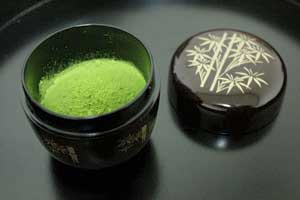| Aug 08, 2018 | |
Nanomedicine: Green tea targets tumors(Nanowerk News) Wrapping an anticancer drug in a nanoscale case made of a polymer and a component of green tea is an extremely effective way to deliver high doses of the drug to tumors, an A*STAR team has shown (Advanced Materials, "Highly augmented drug loading and stability of micellar nanocomplexes composed of doxorubicin and poly(ethylene glycol)–green tea catechin conjugate for cancer therapy"). They demonstrated the system’s potential by using it to inhibit the growth of liver tumors in mice. |
|
 |
|
| A component of green tea known as epigallocatechin gallate (EGCG) facilitates efficient transportation of anticancer drugs to tumors. (Image: Christian Kaden, Satori-Nihon.de/Getty) | |
| The molecules of some polymers are water attracting (hydrophilic) on one end and water repellent (hydrophobic) on the other. When placed in water, such polymers form nanoscale balls known as micelles with their hydrophilic ends facing outward. These micelles make excellent vehicles for transporting drugs to a desired site in the body. That is because an insoluble drug can be stashed in the hydrophobic core of the micelle, preventing it from harming other tissues until it is released at the tumor, while the hydrophilic outer surface enables the micelle to travel in the bloodstream. Micelles can be designed to target tumors through various mechanisms. | |
| Although polymeric micelles have been well studied, in clinical trials they have generally failed to live up to expectations. Their poor performance was down to their low drug-loading capacity — often they can carry only about 10 per cent of their total weight — and their instability, which causes them to break up and offload their cargo before reaching a target, damaging healthy tissue. | |
| Now, Motoichi Kurisawa at the A*STAR Institute of Bioengineering and Nanotechnology, and colleagues, have shown that micelles with hydrophilic tips made of the polymer poly(ethylene glycol), commonly known as PEG, and hydrophobic tails of epigallocatechin gallate (EGCG) — a component of green tea — overcome both these problems. The researchers found that the micelles had a remarkably high drug-loading capacity of over 80 per cent for the anticancer drug doxorubicin. They were also stable in the bloodstream. | |
| “We didn’t expect such a high loading capacity,” says Kurisawa. “Usually micelles become unstable as you increase their drug-loading capacity, and yet our micellar nanocomplexes are soluble in water. That came as a surprise both to us and to some of the reviewers of the paper, who asked us to check our work. But we confirmed the results.” | |
| The results also demonstrated the versatility of the micelles. “In a previous study, we utilized the protein antibody drug (see earlier highlight); this time, we used a small drug,” says Kurisawa. “This is the advantage over existing systems: EGCG can interact with different types of drugs, including antibodies, proteins, small drugs and even nucleic acid. However, specific polymer drug carriers have to be designed to encapsulate specific drugs in conventional techniques.” | |
| In addition to being useful for transporting anti-cancer drugs, EGCG is also known to be a powerful anti-oxidant with anti-cancer properties. The team is now exploring this synergism. |
| Source: A*STAR | |
|
Subscribe to a free copy of one of our daily Nanowerk Newsletter Email Digests with a compilation of all of the day's news. |
